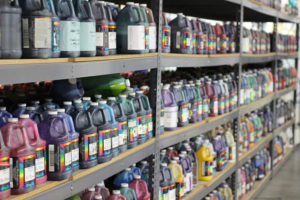One of the things that it’s easy to forget – particularly in terms of the digital printing world that we’re now living in – is that people aren’t going to be experiencing your collateral on a computer screen. Did you ever wonder why that terrific business card, Blu-ray insert or appointment reminder looks one way on screen and then another when you see it with your own two eyes in the real world? There’s actually a simple reason for that and it can be summed up in one simple-yet-critical word:
Light.
Lighting affects colors in particular in a wide range of different ways, so if you really want to make sure that those print materials you’re creating look every bit as good in reality as they did on your computer, there are a few key things to keep in mind.
The Impact of Light on Materials
To understand a little bit more about this topic, you need to first gain a better understanding of how the human eye works in the first place. Whenever you look at something, the color you see is actually impacted pretty heavily by the light frequencies that are actually making their way from the object to your eye. This, in turn, is affected by two things – the frequencies that the object absorbs and the light frequencies in the lighting in the room that you’re actually in.
This is why on a cloudy day, a car driving by might appear to be a dark blue color but on a sunny day, that same car actually has a little bit of a purple hue to it. This is also why you always need to consider the environment a printed material will be primarily viewed in as often as possible during the design process.
 Other Color Considerations
Other Color Considerations
But things don’t stop there. The type of paper stock you’re using, the type of finish (glossy, woven or matte) and even whether you’ve used varnish or thermography will also impact the way something looks in a particular space. Finishes in particular really impact the way material absorbs light which, in turn, impacts the way that your eye will absorb it, too. Therefore, all of the choices that you’re making in this regard should really be impacted by exactly what it is that you’re trying to accomplish in the first place – not just the fact that your favorite color happens to be blue.
This is why when designing something like a product label, you shouldn’t just say “I want it to be blue.” You need to go deeper than that. What shade of blue? What will this look like in a bright showroom versus in a customer’s home? These are all things that you absolutely have to think about to have complete control over the feeling and emotion that you’re going for.
Let us help ensure your printed product matches your vision and design specifications. Contact us below!
